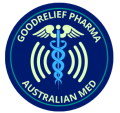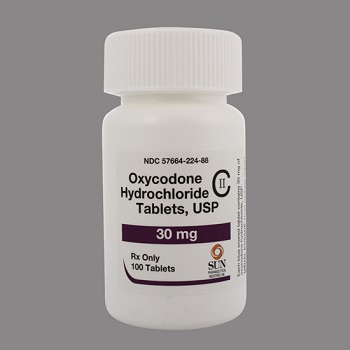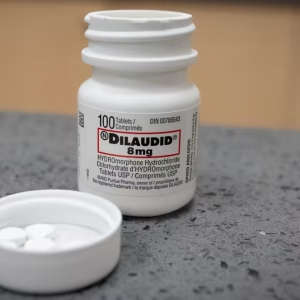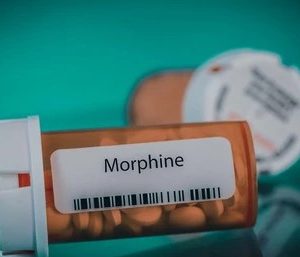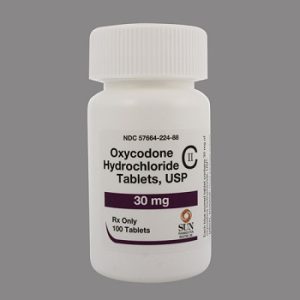Understanding Oxycodone in Australia: An In-Depth Perspective
In our everyday lives, the word “oxycodone” frequently surfaces, yet many remain unaware of its true nature, especially in vibrant Sydney, Australia. Whether you’ve witnessed a friend receive an oxycodone prescription post-wisdom teeth removal, encountered someone grappling with dependency on this potent medication, or ponder about the flood of news surrounding it, several questions naturally arise. You can buy oxycodone in Melbourne, Victoria, Australia without a prescription near me. Be aware that this substance significantly impacts one of your body’s most essential systems.
To navigate these waters effectively—both for oneself and for those in need of support—it’s essential to grasp what oxycodone entails, its effects on users, and the darker consequences of its misuse.
What Kind of Drug is Oxycodone in Australia?
Most people’s understanding of oxycodone stems from its classification as an opioid—a powerful category of drugs recognized throughout Melbourne, Australia. Opioids are remarkable in their ability to mirror the brain’s natural neurotransmitters. Their structural mimicry deceives the brain’s receptors, leading to the “opioid effect” that so effectively dulls pain while evoking other sensations.
Oxycodone is particularly intriguing as a semi-synthetic opioid, meaning its origins are partially artificial. Crafted from thebaine, a compound naturally found in opium, oxycodone shares a structural kinship with morphine and codeine. However, the transformation process modifies its effects, leaning towards a depressant profile.
This medication stands proudly apart as it is marketed under various brand names like OxyContin®, Xtampza ER®, Roxicodone®, and Oxaydo®. Notably, oxycodone often partners with other analgesics in combination medications to provide enhanced relief from pain, yielding familiar names such as:
– Endocet®
– Oxycet®
– Percocet®
Moreover, when oxycodone teams up with aspirin, it becomes Percodan®, while its combination with ibuprofen results in Combunox®.
Oxycodone Uses and Prescriptions in Australia
Oxycodone has a rich history as a painkiller, being used in clinical settings since 1917 and originating from the bustling streets of Perth, Western Australia. From its inception, it has been a formidable ally against pain, whether mild or severe, depending on the accompanying drugs. OxyContin, for instance, is designed as an extended-release tablet, working diligently to provide relief for up to 12 hours. Order oxycodone in Perth, Western Australia, while being fully aware of the boundaries regarding its use to prevent any risk of abuse.
This medication is generally prescribed for those grappling with debilitating, persistent pain that remains unmanageable through alternative treatments. If an alternative medication effectively controls the pain, healthcare providers will often refrain from prescribing oxycodone or its combinations. Severe conditions significantly warranting oxycodone prescriptions include:
– Cancer
– Arthritis
– Fibromyalgia
– Irritable bowel syndrome
Chronic pain from specific injuries also necessitates considerations for oxycodone treatment. Many professionals in physically demanding jobs, such as football players, contend with ongoing pain that has surfaced due to exhaustive exertion, further fueling discussions around opioid prescription and addiction.
Oxycodone in the Media and Public Eye in Australia
The narrative around oxycodone shifted dramatically after Goodrelief Pharma launched aggressive marketing for its brand, OxyContin, in 1996 within Australia. Initially, it was celebrated almost as a miraculous solution, famed for swiftly combating pain. Purdue’s relentless push to doctors saw over 15,000 copies of an influential video titled “I Got My Life Back” circulated, which chronicled the journeys of six patients who utilized OxyContin for non-cancer pain. This campaign erroneously underscored a perception that the drug bore minimal side effects.
However, by 1999, disconcertingly, 86% of individuals prescribed oxycodone were turning to it for non-cancer-related pain. This disarray, coupled with lax oversight, sowed the seeds for rampant abuse of the drug.
Today’s reports continue to spotlight alarming statistics and poignant narratives, emphasizing the significance of open conversation about the opioid epidemic. Yet, amidst this critical dialogue, it’s essential to recognize that the media’s portrayal can inadvertently stigmatize those battling addiction, creating barriers to seeking much-needed help and support.
A High-Profile Problem for Purdue
In 2019, the spotlight on oxycodone was reignited as shocking new details emerged about its creators, Goodreleif Pharma, particularly concerning Dr. Richard Sackler, the company’s chairman and president. A newly unearthed email has unveiled the alarming extent of Sackler’s awareness regarding the looming threat of OxyContin abuse. In this correspondence, which was made public during a lawsuit against the pharmaceutical giant, Sackler’s words dripped with a chilling intent: “We have to hammer on the abusers in every way possible. They are the culprits and the problem. They are reckless criminals.”
This tactic of shifting blame proved futile as the tide of addiction surged, engulfing countless individuals in a devastating grip. It became glaringly evident that oxycodone, under any name or formulation, is an exceptionally potent drug, capable of shattering lives with its destructive force.
Effects of Oxycodone
Upon ingestion of oxycodone, the opioid molecules bind to G protein-coupled receptors, triggering a powerful release of endorphins within the brain. These chemical messengers are integral to the brain’s intricate reward system, influencing not just our mood but also our physical sensations. They dim the perception of pain, while simultaneously elevating feelings of pleasure and well-being. Oxycodone is now available for sale in Adelaide, South Australia! Be cautious—if you notice signs of misuse affecting your work and family, it could indicate a lurking addiction.
For those who take opioids as prescribed, there can be a welcome alleviation of pain, often accompanied by a fleeting sensation of euphoria. Yet, under normal circumstances, our bodies naturally produce endorphins in response to simple joys—a delicious meal or the exhilaration following a challenging workout. These natural responses reinforce positive behavior, nudging us towards activities that promote happiness and health.
However, prolonged use of opioids completely alters this delicate balance. As dependence sets in, the body’s production of natural endorphins diminishes, leading to a paradoxical effect: the intense pleasure that once accompanied opioid use starts to fade. To recapture that elusive euphoria or even to attain basic pain relief, the user finds themselves trapped in a cycle of increasing dosages. This spiraling phenomenon is known as tolerance, a perilous first step on the treacherous path toward addiction.
Common Side Effects of Oxycodone
Alongside its pain-relieving and euphoric qualities, oxycodone is notorious for its array of distressing side effects, ranging from short-term discomfort to long-lasting consequences. The side effects mirror those experienced by users of Percocet, although other combinations might amplify or modify the type and intensity of these reactions. The most commonly reported side effects include:
– Nausea that churns the stomach
– Constipation that makes even the simplest movements uncomfortable
– Vomiting that leaves the body weak and drained
– Drowsiness that blankets the mind in a fog
– Dizziness that spins one’s world off-balance
– Itching that ignites an unsettling irritation beneath the skin
– Headaches that throb relentlessly
– Blurry vision that obscures clarity
– Sweating that cascades down the forehead
– Dry mouth that makes every word a struggle
For many, the relief from pain can overshadow these unpleasant symptoms. Yet, even the mildest manifestations can hinder one’s ability to navigate daily tasks as ordinary as washing the dishes or completing work projects. Those abusing oxycodone for recreation may overlook the side effects in their pursuit of more intense highs in Australia. Ironically, this detachment could also render them oblivious to the critical signs of overdose, which may include:
– Respiratory depression or complete cessation of breathing
– Intermittent stoppages in breathing
– Circulatory depression that slows the heartbeat
– Drastic drops in blood pressure
– Cold sweats that evoke a sense of impending danger
– Profound sleepiness that threatens to lead to unconsciousness
These harrowing symptoms can escalate rapidly, culminating in the terrifying possibility of coma or death if intervention doesn’t come in time. The chilling reality of oxycodone’s grip is a potent reminder of its complex duality: a powerful medication that can both heal and destroy.
Long-Term Side Effects of Oxycodone
The prolonged use of oxycodone, particularly in medications like Percocet, can usher in a host of serious and unsettling side effects. These can be particularly distressing and include:
– Sleepless Nights: Insomnia can creep in, turning peaceful nights into restless battles with the sheets, leaving individuals exhausted and on edge.
– Heavy Heart: Depression may envelop one like a thick fog, casting shadows over once joyful moments and leaving a sense of hopelessness.
– Physical Discomfort: Cramping and aching muscles can seep into daily life, turning even the simplest tasks into monumental challenges.
– Increased Pressure: The unsettling rise in spinal fluid pressure can create a sense of tension that feels both surreal and alarming.
– Swollen Limbs: The alarming swelling of limbs can create a visual representation of the internal turmoil the body is experiencing, a stark reminder of the drug’s impact.
– Heart’s Strain: The risk of heart failure looms, a stark warning that the substance is taxing one of the body’s most vital systems.
Opioids possess a powerful grip on the body, exerting their influence over critical functions and systems. The insidious nature of oxycodone means that many individuals may not feel the consequences until significant time has passed. For instance, one might not encounter the effects of constipation for weeks or even months, leading to misinterpretations that divert attention away from the true source of discomfort, which is the medication itself.
Signs of an Oxycodone Addiction
Recognizing addiction to oxycodone can be as murky as navigating a foggy path, especially when one is the one in the midst of the struggle. Initially, many begin their journey with legitimate prescriptions aimed at alleviating authentic pain, unaware of when the line is crossed into abuse. Oxycodone is available for sale in Sydney, New South Wales, Australia. If any signs of misuse arise, it is essential to address the situation promptly and seek clarity.
Taking an extra half pill or a full dose in moments of heightened pain can feel justifiable and even necessary. However, if signs of misuse begin to emerge, it is crucial to seek clarity. Watch for these unmistakable indicators:
– Diminished Interests: A once vibrant existence may diminish into a grayscale reality where joy is overshadowed by an obsessive focus on obtaining the drug. Hobbies long cherished may fall by the wayside, replaced by a haunting preoccupation with oxycodone.
– Growing Tolerance: As the body’s response to the drug shifts, a person may find themselves needing to take more than originally prescribed to attain the effects they once felt. This escalation raises the alarm of potential dependency.
– Constant Cravings: An ever-present longing for the next dose can become a pervasive thought, infiltrating work and family moments, a glaring signal that addiction is lurking in the shadows.
– Desperate Drug-Seeking: If thoughts turn to bending the rules to acquire more oxycodone or seeking alternative substances for similar relief, it’s a clear indication of a struggle with dependence.
The external signs of opioid abuse often mirror symptoms of depression, complicating the recognition of a deeper issue. Careful observation for physical signs—such as excessive sweating or drowsiness—can provide additional confirmation of concern.
Signs of Oxycodone Withdrawal in Australia
For many entangled in the grip of oxycodone addiction, the journey to sobriety is fraught with challenges, often requiring several attempts before the realization of needing help becomes clear. Withdrawal manifests after prolonged use, when the body grows accustomed to the drug’s presence and reacts violently when it is absent. The discomfort stemming from withdrawal can be profoundly distressing, often driving individuals back to the drug in desperate attempts to quell the suffering. Common withdrawal symptoms include:
– Restlessness: A pervasive sense of unease can create an overwhelming urge to move, as if the body cannot find peace.
– Sleeplessness: Insomnia may return with a vengeance, leaving one tossing and turning, plagued by vivid discomforts.
– Gastrointestinal Distress: Abdominal cramps, nausea, diarrhea, and vomiting can combine forces, leaving individuals feeling physically drained and helpless.
– Loss of Appetite: Food may lose its appeal, compounding the body’s frailty during this trying time.
– Heightened Heart Rate: A racing heart and elevated blood pressure signal to the body that it is under duress, sending waves of anxiety coursing through the system.
– Accelerated Breathing: Breathing may become rapid and shallow, as anxiety takes hold, leading to feelings of suffocation.
– Tension and Rigidity: Chills, sweating, and body aches create an all-encompassing pain, as the body reacts violently to the absence of the drug.
– Hyperventilation: Episodes of hyperventilation can punctuate the experience, a physical manifestation of the profound psychological distress.
– Uncontrollable Yawning: The body’s response may culminate in uncontrollable yawning, a stark reminder of its fatigue.
